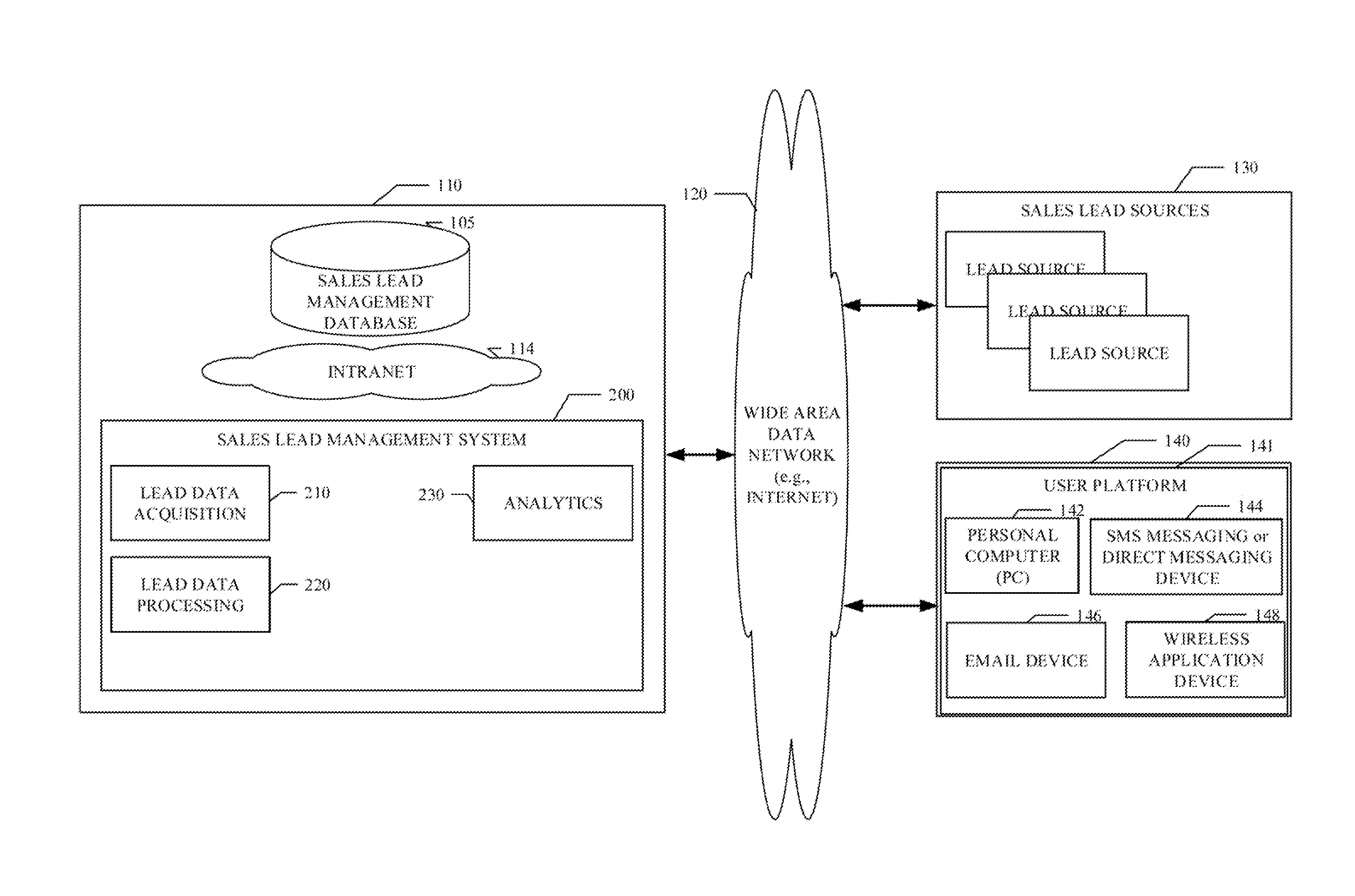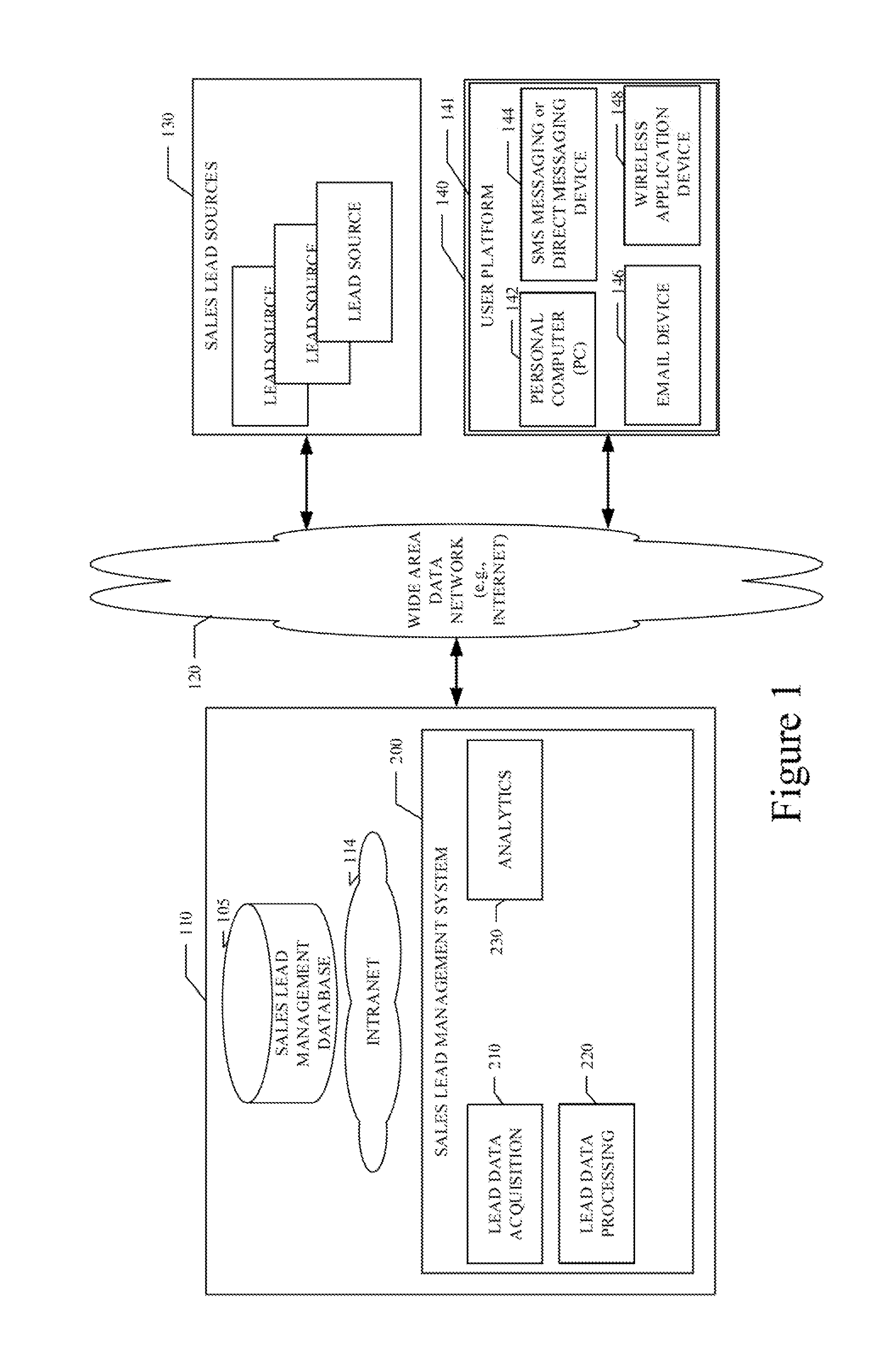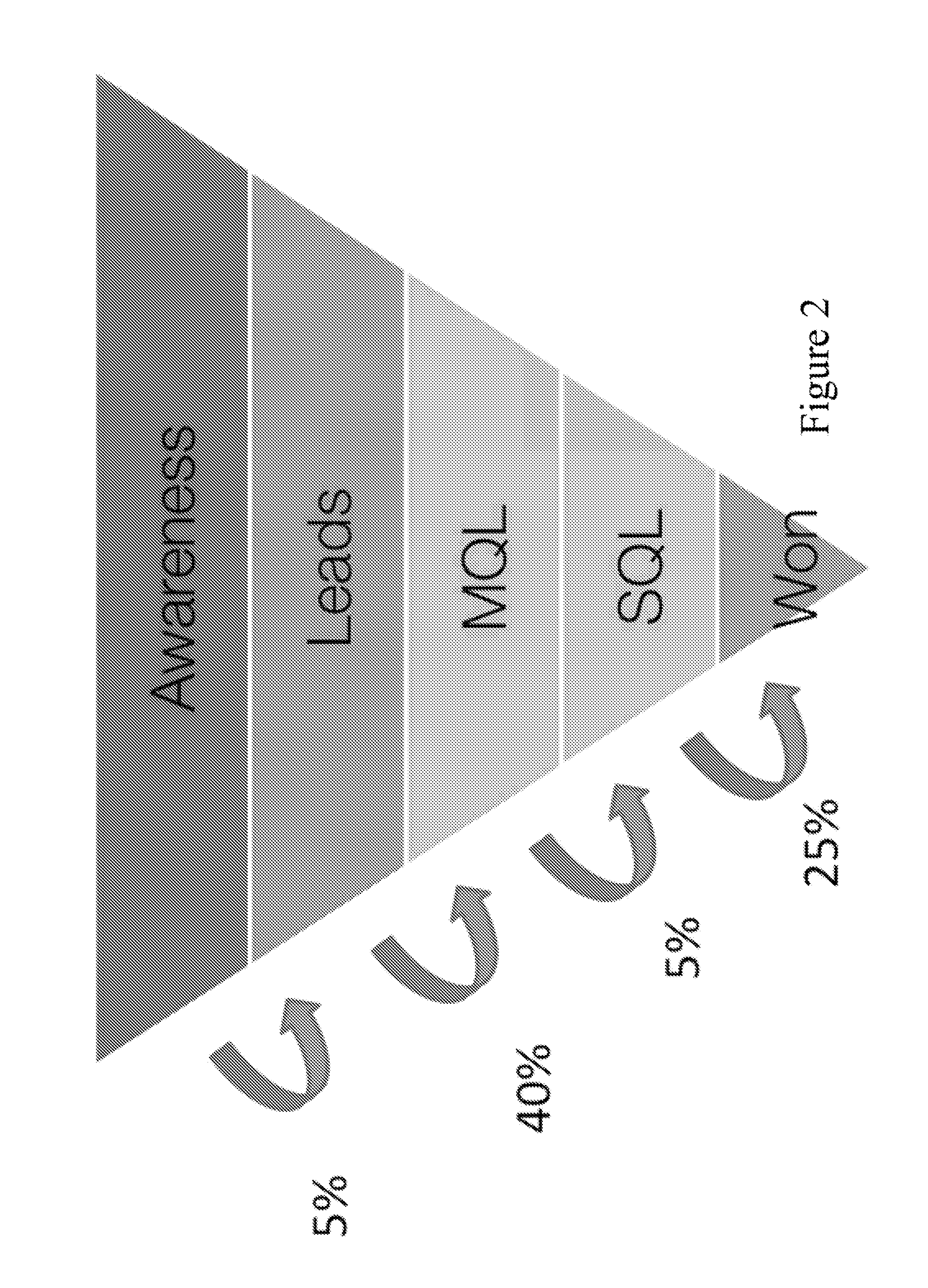Therefore, such systems still result in low quality MQLs being handed off to sales teams, making the sales qualification process expensive, less efficient, and
time consuming.
However, the value of this data has not been applied to lead prioritization and marketing campaign optimization by conventional systems.
These models, as disclosed here for example embodiments, can replace traditional, manually created lead scoring systems, which use hand-tuned scores and are therefore error-prone and non-probabilistic.
A major expense to sales teams is the time wasted on dealing with a large volume of low quality MQLs that will not be qualified.
The most expensive parts of the funnel are the sales qualification and the actual sales (sales representatives pursuing opportunities), since they require the most manual work either by teleprospectors or sales representatives.
Therefore, such systems still result in low quality MQLs being handed off to sales teams, making the sales qualification process expensive and time consuming.
One issue with conventional lead scores is that they fail to capture nonlinear correlations.
However, there may be diminishing returns for each webinar visit.
In addition, complex interactions of features cannot be represented by such models.
Another issue with conventional lead scoring is that the hand-selection of values is error-prone, time consuming, and non-probabilistic.
A third
disadvantage is that these traditional lead scores are unbounded positive or negative values.
To avoid reliance on
behavioral data, one could try to gather additional static features about the customer, but each additional feature adds complexity for hand-selecting an appropriate value.
As we saw before, determining MQLs is an error-prone process.
Even if there is not such a great volume of leads, teleprospecting low-quality MQLs results in wasted time, and is a cause of tension between the sales and marketing teams.
This tension is a serious problem in many companies, and is the subject of research, such as (Kotler, Rackham, and Krishnaswamy 2006).
Because of the potentially flawed marketing qualification, and the arbitrary prioritization of MQLs by the sales team, there is a large amount of
selection bias in the earlier stages of the sales funnel.
Predicting whether a lead will convert is a
binary classification problem, and would seem to require only training a binary classifier.
There are several reasons why this is undesirable for lead qualification.
The main reason is that this would run the risk of simply re-learning the conventional lead scoring model that the company uses.
However, this will not add additional benefit to the sales team, and the quality of the leads selected will be dependent on the quality of the hand-tuned weights.
Another
disadvantage to a two-class solution is that, intuitively, a lead that makes it further through the sales funnel is of higher quality than one that does not.
Although this changes the distribution of leads, and therefore also changes the calibration of probabilities, this filtering of the
training set is not unlike the process of clearing unpromising leads out of a leads
database.
In some cases, missing fields make it difficult to link up a lead with its corresponding opportunity, and vice versa.
Therefore, the model is less flexible because it cannot weigh predicted classification and predicted close.
In FIG. 9 we see, however, that the sales in this later range are a very low sales volume.
We can see that, for company A, DQM performs poorly at achieving a lift in revenue.
DQM achieves very high initial close won lift for company A; but, if we examine the revenue curve in FIG. 12, we see that the initial lift is very low, because it has identified low revenue deals.
If the quality of MQLs are low, the teleprospecting process is particularly time consuming and expensive.
The difference in evaluation of marketing success between marketing and sales can result in tension between the two teams.
This means that the leads that marketing delivers to sales are for the most part of
poor quality, and that the marketing qualification process is not good enough at filtering out leads that will not result in sales.
For each MQL, teleprospectors must go through a time consuming and expensive qualification process before the leads can be qualified as SQLs.
Although many marketing teams measure their success by the number of MQLs, unless the MQLs are of good quality, a large volume will only mean more work for teleprospectors.
We use this data to improve marketing, but it is not immediately clear how to convert such diverse data into meaningful features for a predictive model.
However, deciding how to compute activity counts is not straightforward.
However, because of the large number of combinations of activity types, assets, and descriptions, creating a separate count feature for each individual combination results in a very large number of features with poor data coverage.
Such a large number of features results in over-fitting and poor model performance.
However, this has the disadvantage of losing information that is potentially important for lead prioritization and campaign optimization.
Grouping activity counts by campaign is difficult in practice, since many companies do not keep their campaigns well organized, and it may be difficult to determine which campaign a particular marketing activity belonged to, without company-specific
text mining on various
database text fields.
The problem of lead scoring or prioritization is
ranking leads based on probability of a lead to become a successful sale.
Because topics are learned with an
unsupervised algorithm, they may not directly match with marketing concepts, such as asset or activity type.
As described above, topics are not necessarily easily understood by marketing teams.
 Login to View More
Login to View More  Login to View More
Login to View More 


